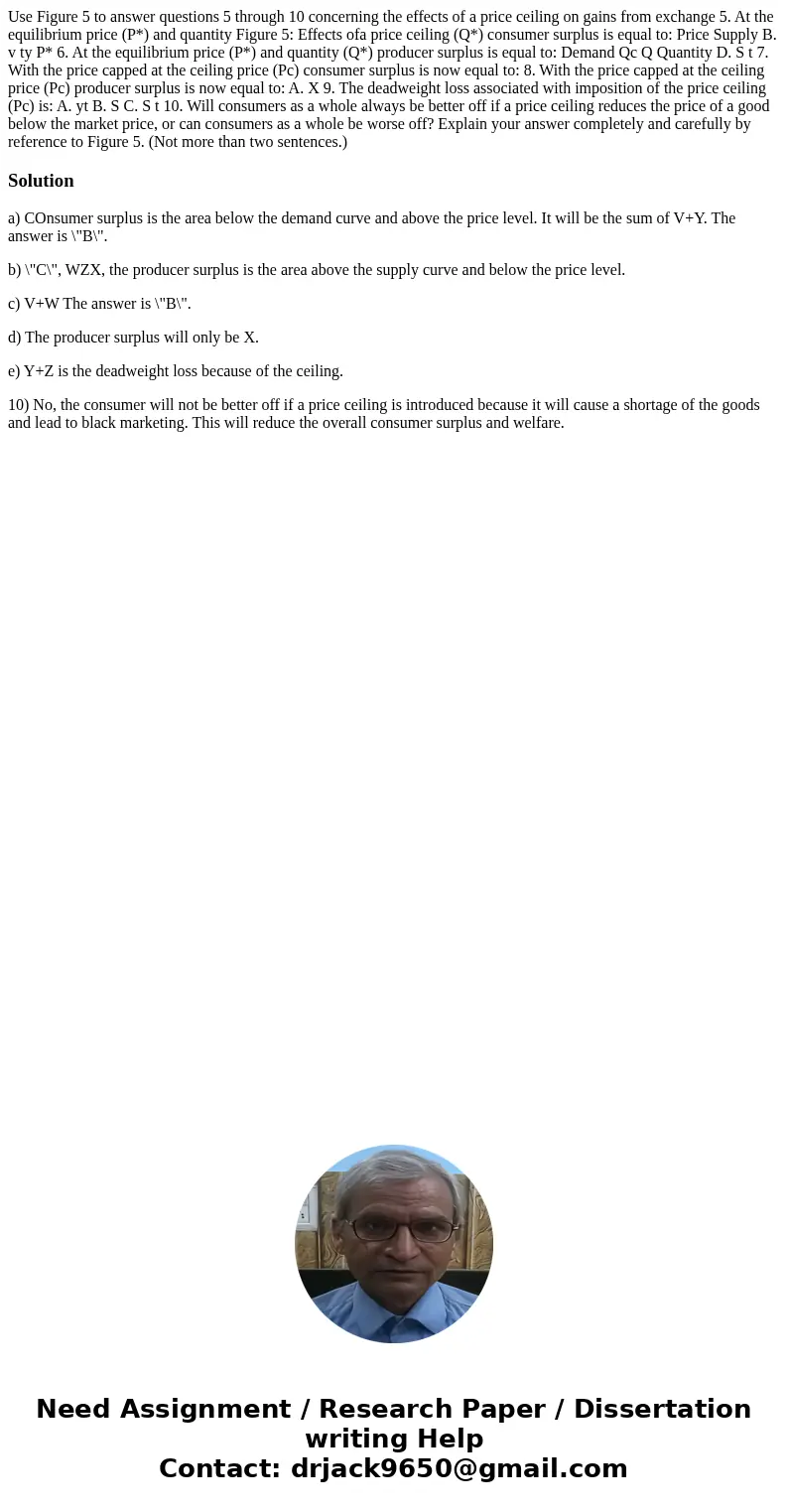Use Figure 5 to answer questions 5 through 10 concerning the
Use Figure 5 to answer questions 5 through 10 concerning the effects of a price ceiling on gains from exchange 5. At the equilibrium price (P*) and quantity Figure 5: Effects ofa price ceiling (Q*) consumer surplus is equal to: Price Supply B. v ty P* 6. At the equilibrium price (P*) and quantity (Q*) producer surplus is equal to: Demand Qc Q Quantity D. S t 7. With the price capped at the ceiling price (Pc) consumer surplus is now equal to: 8. With the price capped at the ceiling price (Pc) producer surplus is now equal to: A. X 9. The deadweight loss associated with imposition of the price ceiling (Pc) is: A. yt B. S C. S t 10. Will consumers as a whole always be better off if a price ceiling reduces the price of a good below the market price, or can consumers as a whole be worse off? Explain your answer completely and carefully by reference to Figure 5. (Not more than two sentences.) 
Solution
a) COnsumer surplus is the area below the demand curve and above the price level. It will be the sum of V+Y. The answer is \"B\".
b) \"C\", WZX, the producer surplus is the area above the supply curve and below the price level.
c) V+W The answer is \"B\".
d) The producer surplus will only be X.
e) Y+Z is the deadweight loss because of the ceiling.
10) No, the consumer will not be better off if a price ceiling is introduced because it will cause a shortage of the goods and lead to black marketing. This will reduce the overall consumer surplus and welfare.

 Homework Sourse
Homework Sourse